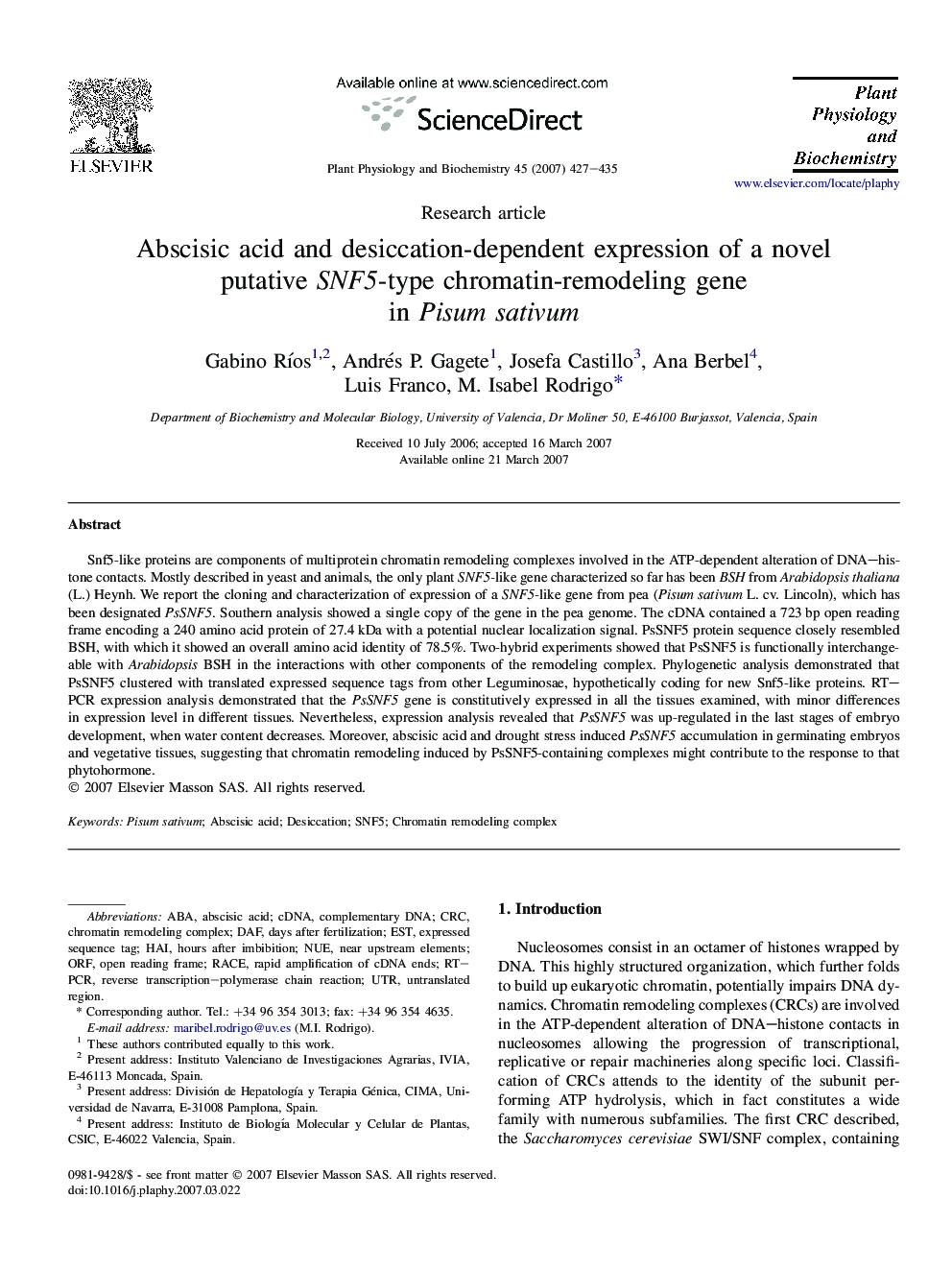| Article ID | Journal | Published Year | Pages | File Type |
|---|---|---|---|---|
| 2015432 | Plant Physiology and Biochemistry | 2007 | 9 Pages |
Snf5-like proteins are components of multiprotein chromatin remodeling complexes involved in the ATP-dependent alteration of DNA–histone contacts. Mostly described in yeast and animals, the only plant SNF5-like gene characterized so far has been BSH from Arabidopsis thaliana (L.) Heynh. We report the cloning and characterization of expression of a SNF5-like gene from pea (Pisum sativum L. cv. Lincoln), which has been designated PsSNF5. Southern analysis showed a single copy of the gene in the pea genome. The cDNA contained a 723 bp open reading frame encoding a 240 amino acid protein of 27.4 kDa with a potential nuclear localization signal. PsSNF5 protein sequence closely resembled BSH, with which it showed an overall amino acid identity of 78.5%. Two-hybrid experiments showed that PsSNF5 is functionally interchangeable with Arabidopsis BSH in the interactions with other components of the remodeling complex. Phylogenetic analysis demonstrated that PsSNF5 clustered with translated expressed sequence tags from other Leguminosae, hypothetically coding for new Snf5-like proteins. RT–PCR expression analysis demonstrated that the PsSNF5 gene is constitutively expressed in all the tissues examined, with minor differences in expression level in different tissues. Nevertheless, expression analysis revealed that PsSNF5 was up-regulated in the last stages of embryo development, when water content decreases. Moreover, abscisic acid and drought stress induced PsSNF5 accumulation in germinating embryos and vegetative tissues, suggesting that chromatin remodeling induced by PsSNF5-containing complexes might contribute to the response to that phytohormone.
